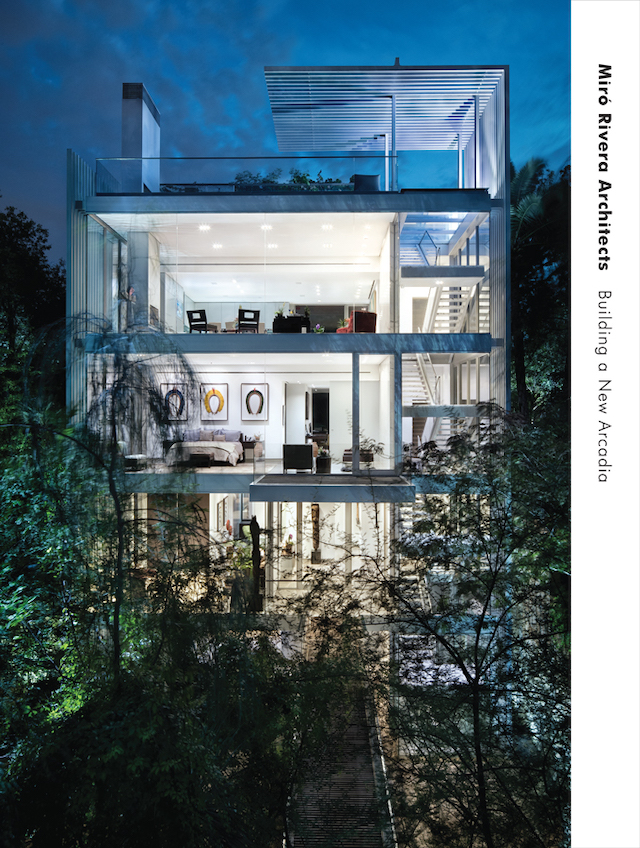Miró Rivera Architects
Miró Rivera Architects: Building a New Arcadia Juan Miró, Miguel RiveraUniversity of Texas Press, November 2020Hardcover | 9 x 12 inches | 448 pages | 326 illustrations | English | ISBN: 978-1477321409 | $65.00PUBLISHER'S DESCRIPTION: Over the course of twenty years, acclaimed studio Miró Rivera Architects has produced an innovative, refined, and imaginative body of work—both modern and respectful of time-honored building traditions—that embodies the particularities of place and blurs the line between art and architecture. The firm’s diverse practice weaves together a commitment to craftsmanship with a honed sense of materiality and space to create structures at once elegant, controlled, and pleasant to inhabit. In all, Miró Rivera Architects has won more than one hundred design awards and represented American architecture at exhibitions worldwide. The first from the firm, this volume provides critical insight into the studio’s creative process through texts, 95 drawings, and 231 photographs, exploring two decades of work that has helped bring Texas architecture onto the international stage. Featuring essays by Michael Sorkin, Nina Rappaport, Juan Luis de las Rivas Sanz, and Carlos Jiménez—prominent thinkers in urban design and architecture—and new images by renowned photographers Iwan Baan and Sebastian Schutyser, this book examines Miró Rivera’s approach to Austin as a “landscape city” and situates the firm’s work in a global context related to concepts of nature, urbanism, sustainability, and history. Miró Rivera Architects is an architecture firm based in Austin, Texas, that has garnered over one hundred design awards, including the AR Emerging Architecture Award and Texas Architecture Firm Award, and that was recognized in ArchDaily’s 2018 list of the world’s best architects. Juan Miró has lectured and published extensively on the work of Miró Rivera Architects and the role of the architectural profession in civic life. He is the David Bruton, Jr. Centennial Professor in Urban Studies at the University of Texas at Austin and a fellow of the American Institute of Architects. Miguel Rivera is a fellow of the American Institute of Architects and a recipient of the AIA National Young Architect Award. He has lectured in the United States and abroad, and his work has appeared in numerous exhibitions throughout Europe and Latin America. REFERRAL LINKS: dDAB COMMENTARY: For me, two projects define the Austin architecture firm of Juan Miró and Miguel Rivera: the pedestrian bridge connecting a house and guest house they also designed; and Circuit of The Americas (COTA), a massive sports venue made up of multiple parts (grandstand, amphitheater, observation tower). Outside of the fact the firm designed a couple pedestrian bridges to allow visitors to traverse the Formula One racetrack to access the different parts of COTA, the two projects are miles apart typologically. They are also quite different in terms of scale, with the pedestrian bridge serving a family and its guests and COTA able to host 120,000 people for races, soccer matches, concerts, and other events. There are formal similarities, in the bridge's bar guardrails and the observation tower's bright-red tubular "veil" — gestures that repeat in other projects, as revealed in the spreads below — but it's diversity that seems to tie the firm's buildings together. Michael Sorkin echoes the variety of the firm's output in his posthumous preface: "What might otherwise be called a 'style' seems so indigenous and assumes so many guises that it evades any analysis that tries to isolate or refract its particular vocabularies and moves." The "guises" focuses on two types of projects: single-family houses and public buildings. Following Sorkin's text and one by Juan Luis de las Rivas Sanz, Juan Miró's "The Landscape City" briefly describes Austin's urban fabric in words and then follows them with a visual presentation of ten houses ordered by neighborhood density, from 4 houses/acre in the city's Clarksville neighborhood to

University of Texas Press, November 2020
Hardcover | 9 x 12 inches | 448 pages | 326 illustrations | English | ISBN: 978-1477321409 | $65.00
PUBLISHER'S DESCRIPTION:
REFERRAL LINKS:
SPREADS:









